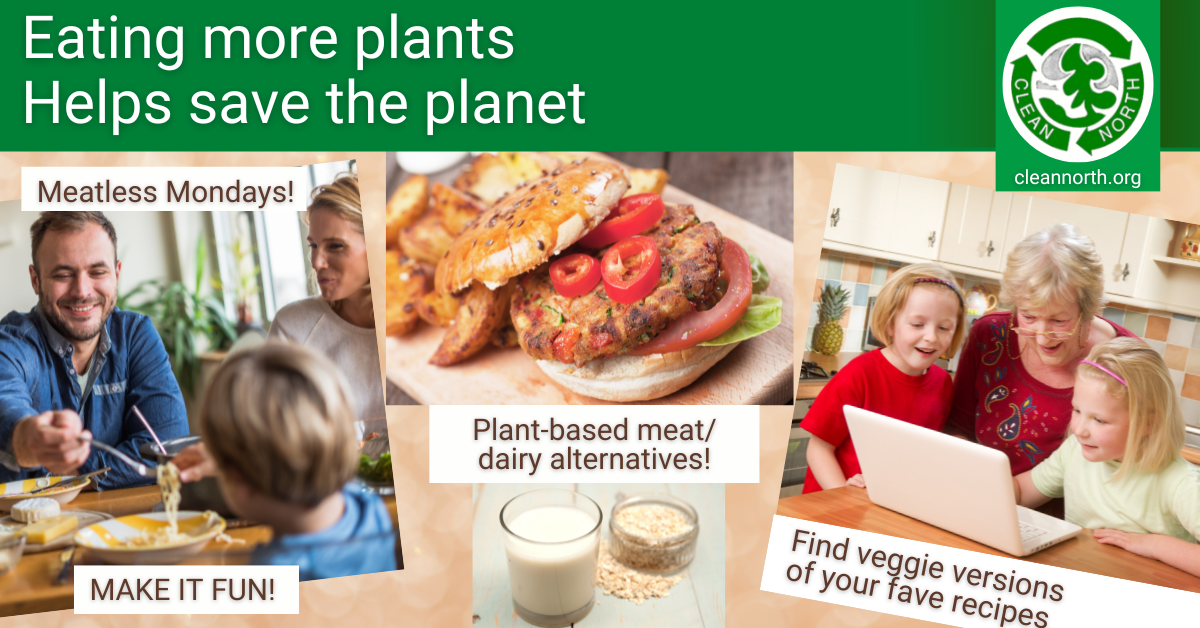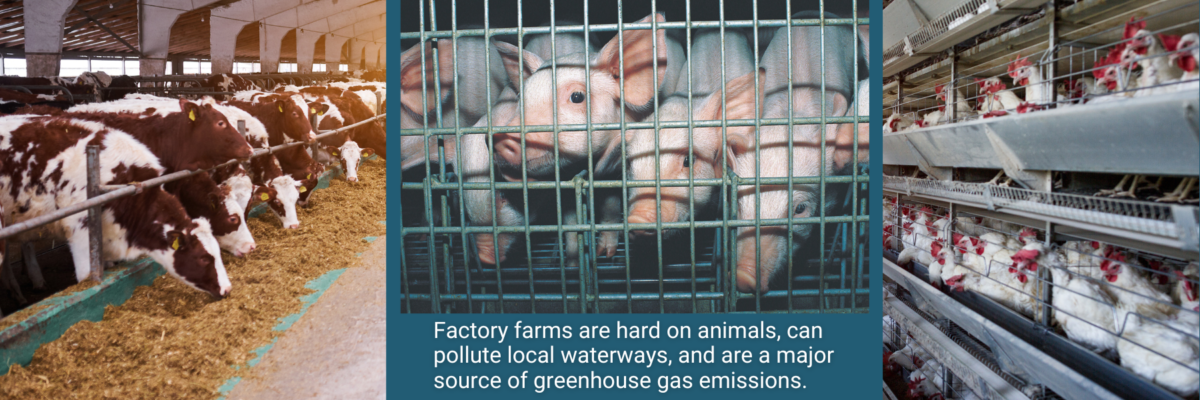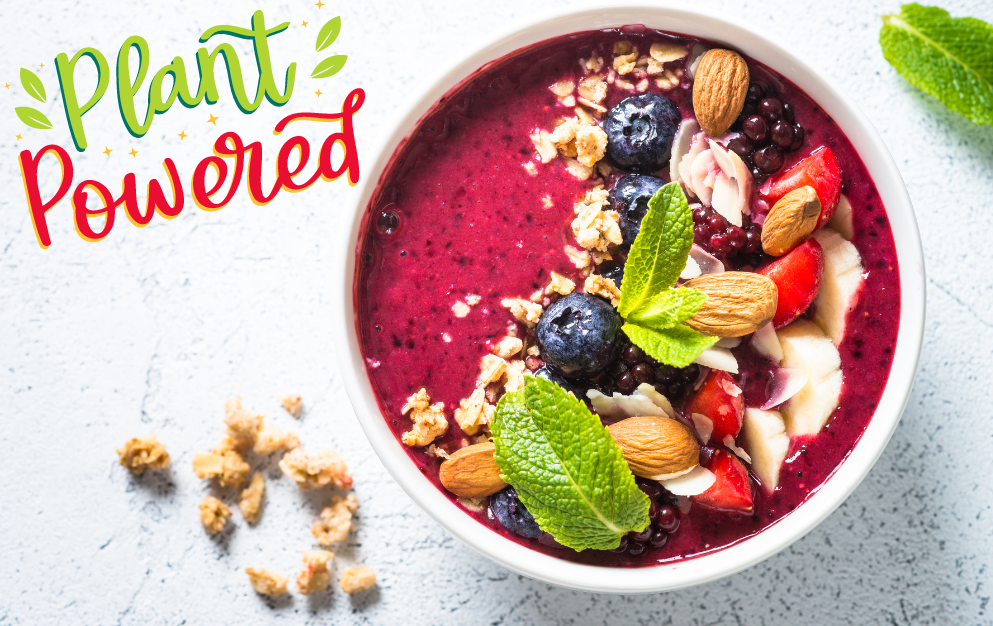
By guest writer Abbi Johnston
Veganism can be a divisive topic, so I ask that you read this with an open mind. No one is demanding you go vegan overnight, but the evidence is overwhelming that consuming meat and dairy products has a huge negative impact on the environment. Following is a snapshot of some of the impacts of the food industry, as well as some tips for reducing your consumption.
Meat/dairy come with environmental perils

You might be surprised to learn that about 77% of the world’s agricultural land is used to grow crops to feed livestock. That means less than a quarter of all land used for growing crops is used to feed humans.
Aside from the land needed to sustain animal agriculture, there’s the impact of greenhouse gas emissions from the waste produced. Almost 15% of global greenhouse gas emissions come from the animal agriculture industry.
And along with the obvious issue of the amount of animal waste produced is the impact on communities living near factory farms. A recent study published by the Proceedings of the National Academy of Sciences of the United States of America found that upwards of 17,000 deaths per year could be attributed to pollution from factory farm waste. While regulations are more strict for emissions from gas and fossil fuels, there are relatively few regulations for pollution from factory farming.
Animal agriculture also causes issues with groundwater contamination. Even the best setups for waste runoff pits can end up leaking. Aside from leaks, major storms have also caused issues in recent years – increasingly strong hurricanes have impacted agricultural areas and led to water contamination through flooding.
So, how can you make a difference?
The easy answer is to consume less meat and dairy. To break that down into a more manageable plan, starting with “meatless Mondays” is a great option.
Think about all of the easy-to-make foods you already eat that are vegan (peanut butter and jelly sandwiches, pasta with marinara sauce, etc.). That can help you feel less overwhelmed.
Make simple swaps to start, like switching to oat or almond milk and vegan butter instead of dairy. Try some of the vegan options at the grocery store—so many great products have come out in recent years! Gardein and President’s Choice both have great selections of vegan meats alternatives and can easily be found locally.
Harness the nutritional power of plants

The way you think about food is the biggest thing to change if you want to make a difference. Instead of getting protein directly from plant sources, we’ve been taught that we need to eat animals (who eat plants!) to get protein. The great news is that now is the easiest time in history to reduce your meat and dairy consumption, because there are so many options at the grocery store.
By simply doing a Google search, you can find vegan recipes for all your favorite meals. Below I include links to some of my go-to websites for vegan recipes in case you decide to do some exploring.
Every step matters
Every step you take to reduce your consumption of animal products has a positive impact on the environment. You just have to choose when to start.
Some of my favourite vegan websites
Got questions about reducing meat consumption or going vegan?
Email us at info@cleannorth.org.




